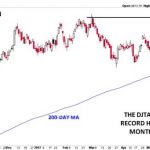In 2017, the dollar index fell as the dollar weakened against its closest peers. Most of these losses came as a result of the euro which rose buoyed by the strong European economy. This year, the cycle has changed in favor of the dollar. Year-to-date, the dollar index has risen by more than 4%. These gains have been attributed to the monetary policy divergence between the key central banks. In the United States, the Fed has continued on its monetary tightening policy while in Europe, Asia, and Asia-Pacific, the central banks have sounded more dovish.
At the Jackson Hole symposium, the Fed chair, Jerome Powell reiterated his earlier hawkish views. In his speech, he said that the Fed believes that the economy is strong and in need for more tightening. This thought was repeated by a few other Fed members. This statement meant that the Fed will likely continue tightening especially in the September meeting. In December, the odds for an increase have fallen to 63%.
A few Fed officials have remained cautious. In an interview two weeks ago, the Atlanta Fed chair, Raphael Bostic said that he would oppose any moves by the Fed that would lead to the inversion of the yield curve. The yield curve is simply the gap between the long and short treasury bond yields. The most common difference is the gap between the 2-year treasury bonds and the 10-year. In recent months, as the Fed has continued to tighten, the yield curve has continued to flatten. Some analysts believe that two more hikes will lead to an inversion. When an inversion happens, it raises chances of a recession.
Therefore, the monetary policy divergence has helped push the dollar higher. This presents a major risk for the dollar in the coming year. This is because it is unlikely that the Fed will continue the tightening policy. Therefore, next year, there are chances that the Fed will have one or two rate hikes especially when the neutral rate is reached.
With the Fed not tightening, the focus will likely shift to other central banks. Of key importance will be the European Central Bank (ECB). The bank has pledged to end the quantitative easing (QE) in December. After this, it will leave interest rates unchanged until the end of summer. Traders will want to know whether the ECB will hike rates. If it does, it will be the first rate hike since the financial crisis. However, with the European economy softening, traders will have a wait and see attitude.









Leave A Comment